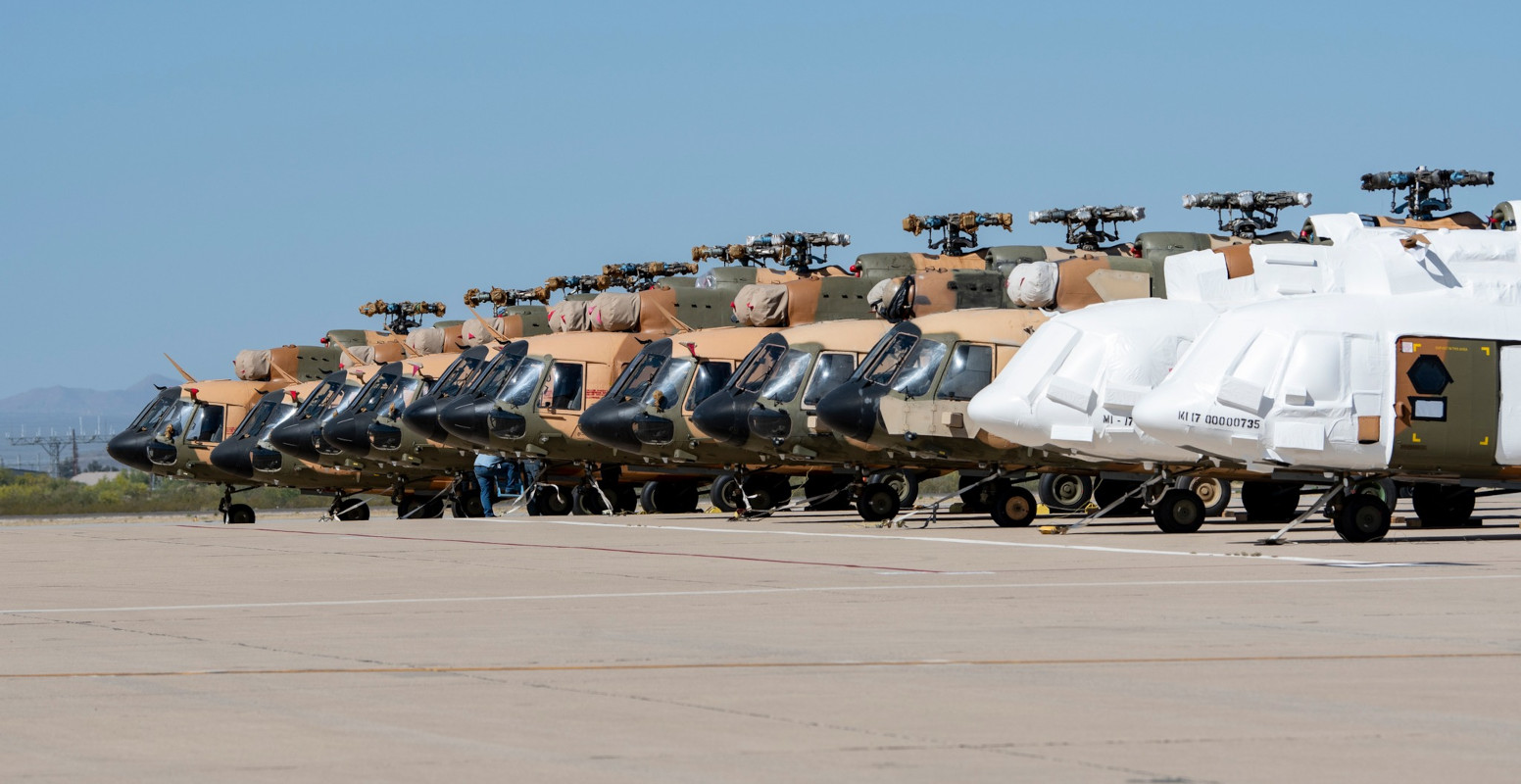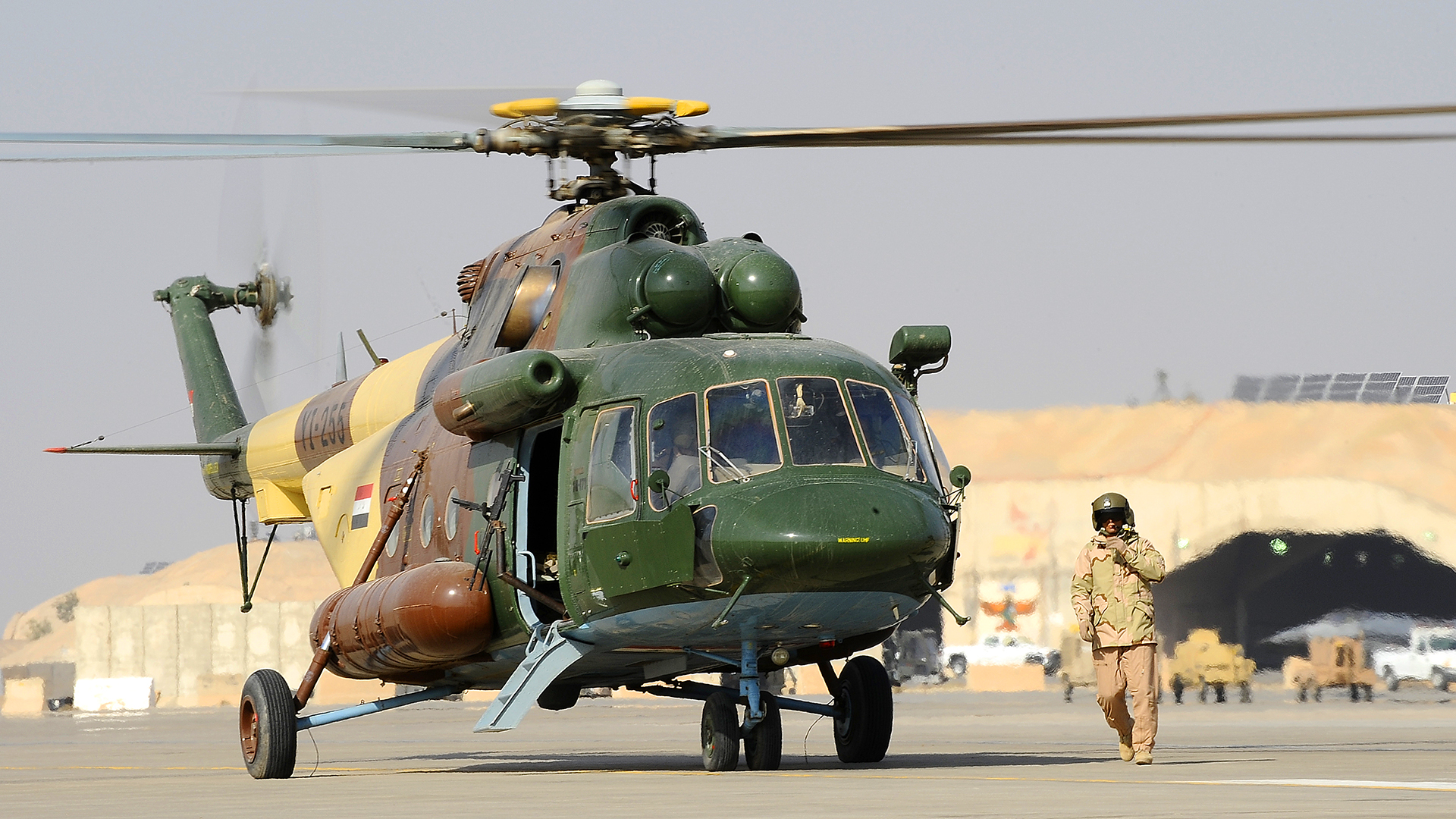Iraq’s Army wants to replace its fleet of Russian-made Mi-17 Hip armed transport helicopters with a mixture of Bell 412EPXs and Bell 412Ms produced in the United States. The significantly reduced availability of Mi-17 spare parts due to Russia’s own needs as a result of its war on Ukraine has been a major factor in these plans. The Iraqi Army’s aviation arm is also looking to acquire a variety of other helicopters from Bell, a company that just recently said publicly that it is trying to take advantage of new market opportunities created by the conflict in Ukraine.
Details about the Iraq Army’s Mi-17 replacement plans and other helicopter modernization efforts were contained within a quarterly report on issues related to Operation Inherent Resolve (OIR) jointly published earlier this week by the Inspector General offices within the Department of Defense, Department of State, and the Agency for International Development (USAID). Operation Inherent Resolve is the official nickname for the U.S.-led coalition campaign against ISIS in Iraq and Syria.

“Due to the war in Ukraine, the IqACC’s [Iraqi Army Air Corps] ability to access spare parts for their Russian-designed Mi-17 helicopters is constrained as most spare parts are going to support Russian military efforts in Ukraine and there are restrictions on buying Russian-made parts,” according to the report. The current plan then is to acquire “4 Bell 412EPX and 16 Bell 412M medium-lift helicopters to replace the Russian-made Mi-17 fleet due to [the] inability to acquire spare parts due to the war in Ukraine.”
The Bell 412EPX is one of the latest variants of the highly successful 412 line and was originally developed in cooperation with Subaru in Japan for that country’s UH-X tender. The 412EPX won that competition and the first example of what that country has designated as the UH-2 was delivered to the Japanese Ministry of Defense in July 2022.
The 412EPX is based on the preceding 412EPI variant and features further improved avionics and other mission systems together with a modern glass cockpit. The entire Bell 412 series is part of the iconic Bell Huey family of helicopters.

More recently Bell has introduced the 412M as part of a broader push to offer various commercial types with from-factory integrated weapons and other features for use by military and other security forces, as you can read more about here. Bell’s website says the 412M is ready to accommodate CFD International’s Huey Ordnance Stores System, which consists of door-mounted machine guns and hard points for various kinds of forward-firing weapons, as well as a sensor turret under the nose.

Beyond the 412s, the Iraqi Army wants to acquire “15 new Bell 407M light attack helicopters, including associated rocket and gun systems, avionics, and pilot/maintainer training, to replace the ISF’s aging 407 fleet” and “15 new Bell 505 training helicopters to replace the ISF’s aging Bell 407 and OH-58 training fleet,” according to the recent OIR report.

The baseline Bell 407 was a further evolution of the Bell 206L-4 LongRanger light helicopter that also incorporated features originally developed for the U.S. Army’s OH-58D Kiowa Warrior armed scout helicopter. As the OIR report notes, the Iraqi Army already operates a number of Bell 407 types, including armed IA-407s and improved 407GX variants.

The further improved 407M is another example of the new line of militarized commercial types that Bell is now marketing and you can learn about that helicopter specifically in this recent War Zone story.

The Bell 505, also known as the Jet Ranger X, is a relatively new light helicopter design from Bell that leverages the rotor system and other components from the older 206L-4. The company has heavily marketed this type as a trainer, among other roles.

The Iraqi Army is looking to acquire all of these Bell helicopters through the U.S. Foreign Military Sales (FMS) program, whereby the U.S. government helps facilitate the sale, according to the OIR quarterly report. The purchase of Bell 505s, specifically, is expected to be made using Foreign Military Financing (FMF), which is direct U.S. funding in the form of block grants or loans.
No mention in the report is made of any issues that the Iraqi Army might be facing in operating its Russian-made Mi-24/Mi-35 Hind or Mi-28NE Havoc attack helicopters or any immediate plans to replace them. However, the U.S. military’s Office of Security Cooperation-Iraq (OSC-I) told the Inspector Generals that it is “working with the Iraqi MoD [Ministry of Defense] to convert the entire IqAAC fleet to U.S.-produced aircraft in order to simplify parts acquisition, maintenance, and training.”

Interestingly, this is very much akin to the U.S. government’s push to eliminate Russian-made types from the now-defunct Afghan Air Force and raises a number of similar questions in terms of practicality and utility. Most immediately, it is worth pointing out that neither the Bell 412EPX nor 412M is equivalent in any way to the Mi-17. The Hip is a much larger helicopter with greater performance and payload capacity, and features the benefit of a rear ramp for loading and unloading personnel and cargo.
To get a further sense of the differences in capabilities, Bell says the 412M can accommodate a maximum of 14 passengers and has a “useful load” of just under 5,130 pounds. An Mi-17 can carry up to 26 people and has a stated maximum internal payload capacity of nearly 8,818 and a half pounds (4,000 kilograms).
American officials had previously pushed the Afghan Air Force to replace its Mi-17s with UH-60A+ Black Hawks, despite similarly admitting that the U.S.-made helicopters were not as capable in some performance aspects. That transition was still in progress when the Taliban retook control of the country in August 2021. A number of ex-Afghan Air Force Mi-17s were actually brought back to the United States before being transferred to the Ukrainian military.

The Iraqi Army is already looking to acquire additional armed Bell 407Ms beyond the planned initial tranche of 15, according to the report. These could possibly supplant some number of Mi-24/Mi-35 or Mi-28NE helicopters if similar parts shortages emerge, but again they would offer significantly more limited capabilities compared to the Russian types. On top of just being substantially bigger and more heavily armed and armored, the Hinds, specifically, have a secondary troop-carrying capability that makes them unique among attack helicopters currently in service anywhere in the world.
The Bell 407M can still be armed with an impressive array of different weapons, including various precision-guided munitions, including Hellfire and Griffin missiles. The introduction of guidance kits for 70mm rockets has further increased the options for turning light helicopters like this into precision strikers.
Iraq’s Army could, of course, seek to acquire more directly comparable replacement attack helicopters from the U.S. or other non-Russian sources. In 2021, Iraqi Defense Minister Juma Inad said his country had reached a preliminary deal to buy 12 T129 ATAK helicopters produced by Turkish Aerospace Industries. At that time, there were questions about whether the U.S. Congress might hold up that deal over various spats with the Turkish government and it’s not immediately clear if any further movement on this purchase has been made. T129s are powered by American-made LHTEC T800-4A engines, the export of which would require approval from U.S. authorities.

Regardless, if the conflict in Ukraine continues to put strains on the availability of spare parts for Russian-made Mi-17s, as well as other military helicopter types, the options available to countries like Iraq may have limited overall. These issues could easily be compounded by the fact that Russia’s defense industry, as a whole, is now suffering under crippling Western sanctions.
Furthermore, the U.S. government, through the Countering America’s Adversaries Through Sanctions Act (CAASTA), which predates Russia’s all-out invasion of Ukraine, has readily available options to levy sanctions on countries that buy weapons and other military systems from Moscow. Turkey, a treaty ally of the United States through NATO, was notably hit with CAASTA sanctions in 2020, over its purchase of S-400 surface-to-air missile systems from Russia. The threat of CAASTA and other sanctions has scuttled other Russian arms deals, including a potential sale of Mi-17s to the Philippines, since then.
Other countries could very well find themselves facing similar predicaments when it comes to sustaining their Russian-made helicopter fleets Bell and Sikorsky have already made clear they are interested in taking advantage of this geopolitical situation to push their products as alternatives.
“It’s not just that they don’t want to buy former Russian equipment or Russian equipment; they’re not going to be able to,” Jeff Schloesser, Bell’s executive vice president for strategic pursuits, told The War Zone and other reporters outright at a media day event at Bell’s headquarters in Fort Worth, Texas last month. “Those industries are going to essentially go into a very severe decline over the next couple of years, and as long as the sanctions stay put, my guess would be that the aircraft will rapidly become unflyable.”
All told, it will be interesting to see exactly how Iraq proceeds with the modernization of its helicopter fleets, which could be the start of a broader trend.
Contact the author: emma@thewarzone.com
